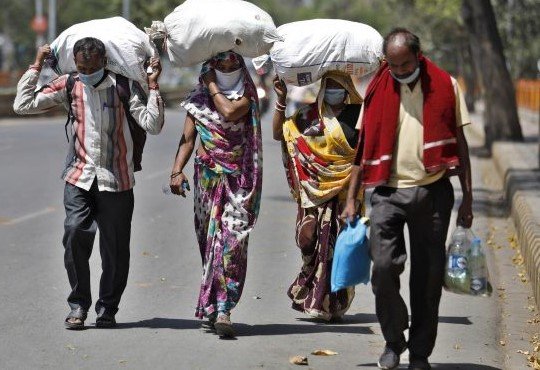Saudi Arabia has officially abolished its long-standing Kafala sponsorship system, a major reform that frees millions of migrant workers from employer control. This change, announced in October 2025, aligns with the kingdom’s Vision 2030 plan to boost its economy and improve human rights standards.
Understanding the Kafala System
The Kafala system started in the 1950s and tied foreign workers to their sponsors, known as kafeels. Employers held power over workers’ visas, job changes, and even exits from the country.
This setup often led to abuse, with reports of passport seizures and unpaid wages. Human rights groups called it a form of modern slavery, especially for low-skilled laborers in construction and domestic work.
Over the years, the system affected workers from countries like India, Bangladesh, and Pakistan. Critics pointed out how it limited basic freedoms and trapped people in bad situations.
Recent data shows that Saudi Arabia hosts about 13 million migrant workers. Many faced exploitation under Kafala, with limited ways to seek help or switch jobs.

Key Reforms and Changes
The abolition means workers can now change jobs without sponsor approval. They can also leave the country freely, ending the need for exit permits.
New rules include better contract protections and dispute resolution processes. Workers gain more rights to fair pay and safe conditions.
Here are some main updates:
- Job mobility: Switch employers after a notice period, without fear of deportation.
- Exit freedom: Leave Saudi Arabia without needing permission from bosses.
- Legal safeguards: Access to courts for complaints about abuse or wage issues.
- Visa updates: Simplified processes for renewals and family reunions.
These steps aim to match global labor standards set by groups like the International Labour Organization.
The government plans to roll out digital tools for tracking contracts and reporting problems. This could reduce illegal practices that thrived under the old system.
Impact on Migrant Workers
Around 2.5 million Indian workers stand to benefit, along with millions from other nations. For many, this means escape from exploitative jobs and better life choices.
Stories from workers highlight past struggles, like being stuck in low-pay roles or facing threats. Now, they can seek better opportunities in a growing economy.
Experts predict this will attract more skilled talent to Saudi Arabia. It could also lower remittance losses from wage theft, helping families back home.
However, challenges remain, such as enforcing the new rules in remote areas. Some workers worry about short-term disruptions during the transition.
| Country | Number of Migrant Workers in Saudi Arabia | Key Sectors |
|---|---|---|
| India | 2.5 million | Construction, Healthcare |
| Bangladesh | 2 million | Domestic Work, Manufacturing |
| Pakistan | 1.8 million | Oil and Gas, Services |
| Philippines | 1 million | Hospitality, Nursing |
| Egypt | 1.5 million | Engineering, Education |
This table shows the top sources of migrant labor and their main fields.
Link to Vision 2030
Crown Prince Mohammed bin Salman drives Vision 2030 to cut oil dependence and build a diverse economy. Ending Kafala supports this by creating a fairer job market.
The reform comes ahead of big events like the 2034 FIFA World Cup. Saudi Arabia wants to show progress on human rights to draw tourists and investors.
Other Gulf countries watch closely, as similar systems exist there. This could spark wider changes in the region.
Recent moves include women’s driving rights and tourism boosts. Together, they paint a picture of a modernizing nation.
Logical reasoning suggests that without such reforms, Saudi Arabia risks losing global partnerships. The change addresses long-standing criticisms from groups like Amnesty International.
Global Reactions and Future Outlook
World leaders praise the move as a step forward. The United Nations notes it could set a model for labor rights in the Middle East.
Workers’ groups call for strong monitoring to ensure real change. Some experts say full success depends on training for employers and officials.
In the coming months, data will show if worker satisfaction rises. Early signs from social media point to hope among migrants.
This reform ties into broader trends, like post-pandemic focus on fair work. It might inspire similar shifts elsewhere.
Share your thoughts on this major change in the comments below. If you found this article helpful, pass it on to others who might benefit from knowing about these worker rights updates.
